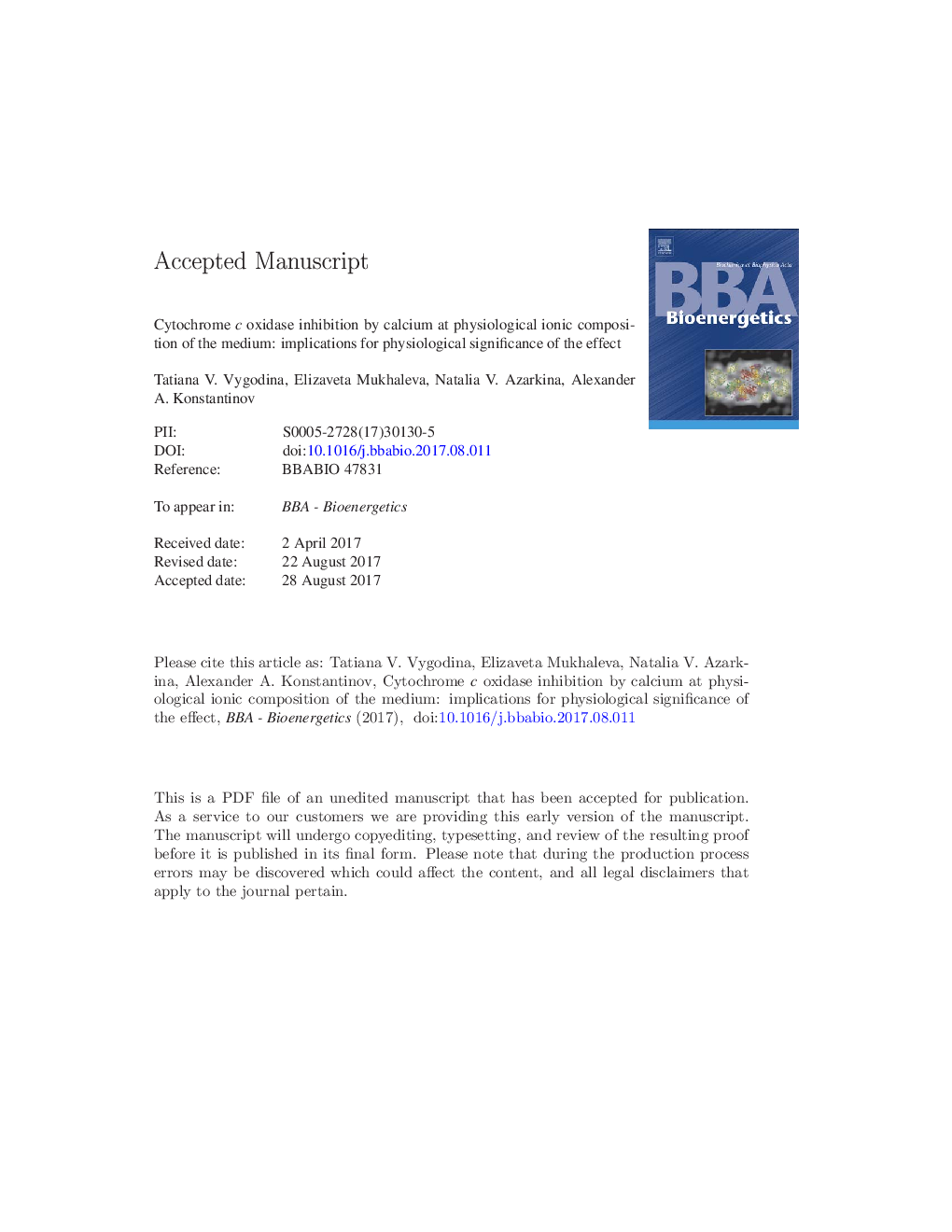| Article ID | Journal | Published Year | Pages | File Type |
|---|---|---|---|---|
| 5507124 | Biochimica et Biophysica Acta (BBA) - Bioenergetics | 2017 | 31 Pages |
Abstract
Cytochrome c oxidase (CcO) from mammalian mitochondria binds Ca2+ and Na+ in a special cation binding site. Binding of Ca2+ brings about partial inhibition of the enzyme while Na+ competes with Ca2+ for the binding site and protects the enzyme from the inhibition [Vygodina, T., Kirichenko, A. and Konstantinov, A.A. (2013). Direct Regulation of Cytochrome c oxidase by Calcium Ions. PLoS One 8(9): e74436]. In the original studies, the inhibition was found to depend significantly on the ionic composition of the buffer. Here we describe inhibition of CcO by Ca2+ in media containing the main ionic components of cytoplasm (150 mM KCl, 12 mM NaCl and 1 mM MgCl2). Under these conditions, Ca2+ inhibits CcO with effective Ki of 20-26 μM, that is an order of magnitude higher than determined earlier in the absence of Na+. At physiological value of ionic strength, the inhibition can be observed at any turnover number of CcO, rather than only at low TN (< 10 sâ1) as found previously. The inhibition requires partially oxidized state of cytochrome c and is favored by high ionic strength with a sharp transition at 0.1-0.2 M. The high Ki = 20-26 μM found for CcO inhibition by calcium matches closely the known value of “Km” for Ca2+-induced activation of the mitochondrial calcium uniporter. The inhibition of CcO by Ca2+ is proposed to modulate mitochondrial Ca2+-uptake via the mitochondrial calcium uniporter, promote permeability transition pore opening and induce reduction of Mia40 in the mitochondrial intermembrane space.
Related Topics
Life Sciences
Agricultural and Biological Sciences
Plant Science
Authors
Tatiana V. Vygodina, Elizaveta Mukhaleva, Natalia V. Azarkina, Alexander A. Konstantinov,
